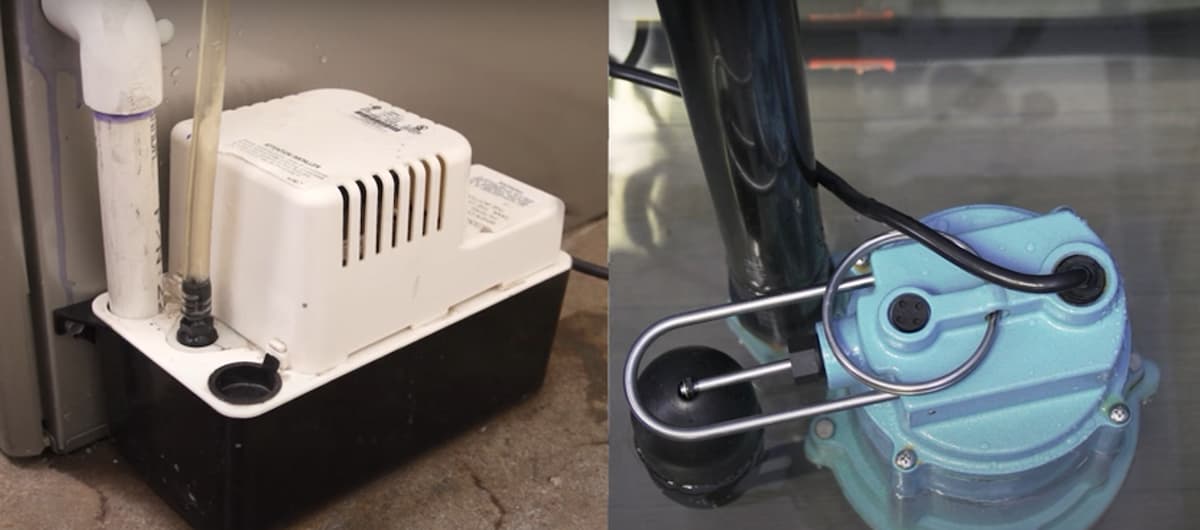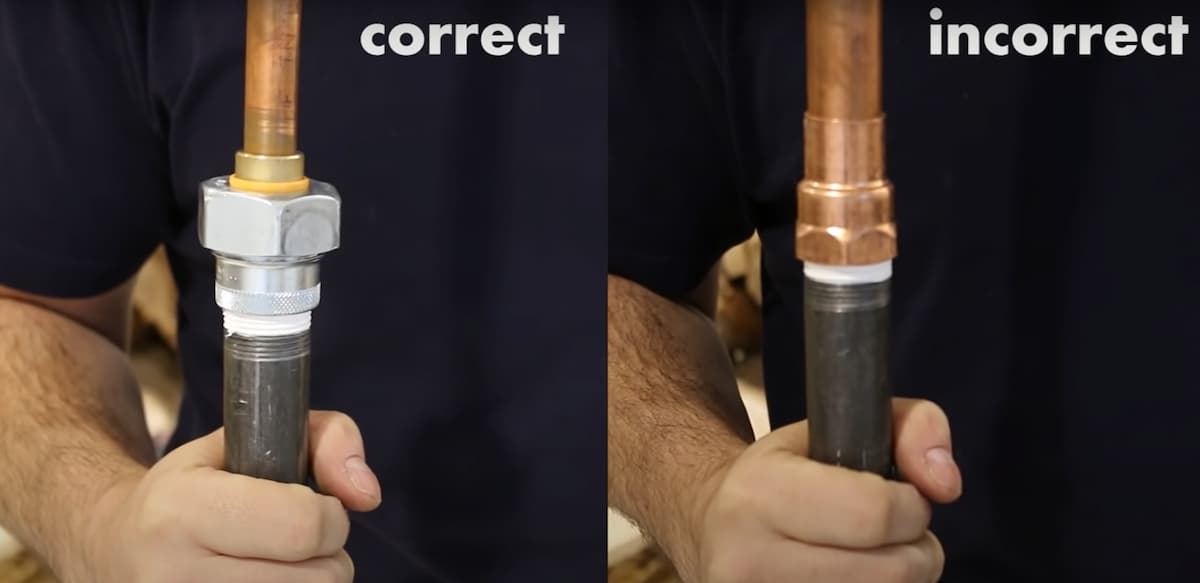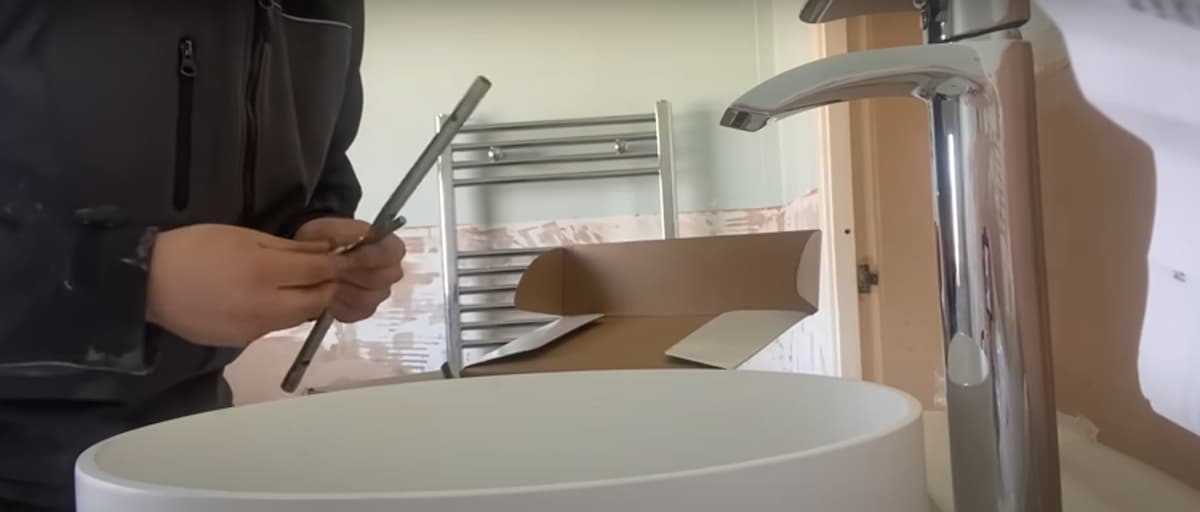
A check valve is a pressure-activated valve that only allows fluid flow in one direction. It consists of two hinged or sliding flaps (usually made of rubber or plastic) and is typically used in the plumbing industry as an opening and closing mechanism for different pipes. Check valves, by their nature, only allow flow in one direction. They are often referred to as “one-way valves” or “non-return valves,” since they restrict reverse flow within the system. The main function of a check valve is to avoid backflow in the network.
When Can I Use a Check Valve?
Check valves are usually installed where there are two separate openings of the same pipe so that no matter which way you open it, the water flow is always a forward flow through just one of them. A check valve prevents backflow into the pipe if the direction is in a reverse flow, something that could damage your property significantly. For example, say you have a pump supplying water from a stream to your home’s faucets. If you were to turn off the pump, the water in the pipe would continue in a forward flow towards your home, since it is heavier than air and wants to find its own level. If there was no check valve at this point, you could be in for a big flood.
The same principles apply to sewer systems and even power plants, if one of these stops working due to an attack or malfunction, there needs to be a safety mechanism in place so that backflow does not cause damage. You could also use check valves when connecting pressure differential pipes together, to monitor for a pressure drop in the valve body.
A check valve can help prevent fluid from escaping from higher pressure areas into lower ones during situations such as transferring fluids from containers into pumps or other machines whose purpose is to draw out liquids from their sources, literally sucking them up. In order for the pumping to be effective, the higher pressure of the fluid source can potentially overcome the pressure created by vacuum pumps, something that can happen if check valves are not used. Finally, check valves are sometimes necessary for pool filtration systems that use a filter pump.
What is a Check Valve Main Purpose?
Check valves also have another name: “one-way valve.” This is because they are often used in places where flow needs to be controlled in only one direction, rather than both directions like typical valves do. One way systems don’t really need full functional valves since fluids (or, more accurately, gasses) never return into them, they just go straight through and then out again without ever returning to their source. This makes one-way valves ideal for systems that have to release pressure or vacuum regularly.
A good example can be found in household central heating systems that sometimes use check valves as safety devices to prevent overheating by releasing gases (steam) into the outlet pipe if there is nowhere else for them to go. Other examples of one-way flows include water or gas pipes supplying sinks, dishwashers and washing machines, these don’t actually need full functional valves because they never return (unless you open them manually).
One way check valves are also used extensively in medical equipment like blood pumps and anesthesia machines, they even exist inside your mouth where saliva glands create saliva that continuously flows into a structural duct that conducts it into your digestive tract.
What is the Purpose of a Check Valve?
The main purpose of this device is to regulate the flow of fluids in pipes by controlling whether they are allowed to go forward or backward. This is achieved by having a valve that requires certain pressure (or vacuum) in order to be opened while allowing other pressures (or vacuums) through freely. Because check valves can sometimes malfunction, causing them not to work properly and effectively, it’s important for plumbers to use them wisely when repairing plumbing systems or connecting new ones together.
You might remember learning about how all liquids seek their own level during primary school science lessons, this is why water flows down slopes naturally, it’s heavier than air so it finds its own level without any help required from us. The same principles apply to fluids that are being transported through plumbing systems, except that they also have to move around other obstacles like bends in the pipes.
This means that if water is transporting through a pipe that has an obstacle or turns inside it, the water may continue flowing at roughly the same speed even as it reaches the bend because friction isn’t much of an issue here, just take a look at this slow-motion footage if you don’t know what we’re talking about.

Do I Need a Check Valve?
The short answer here is maybe.
Check valves are most commonly installed in places where water needs to be temporarily diverted away from its path, so it’s often the case that they’re used on your average plumbing systems. However, there are other scenarios where check valves can come in handy, for example, construction companies sometimes use them while building new structures because any gasses (like methane) that escape while drilling through earth or concrete may flow into one end of the device rather than escaping into the atmosphere, this is an effective way of keeping harmful gases under control.
Check valves are also used on various devices like chillers and heat exchangers, this helps prevent fluids inside these machines from flowing backward when they could not be (it also helps reduce energy costs in the long term since it reduces heat loss).
Check valves serve a very important purpose in plumbing systems but they can also be used to solve problems in many other situations. Before deciding whether or not you need a check valve, make sure you take a careful look at your current plumbing system and evaluate everything carefully. This may allow you to ensure that everything is working properly and efficiently, saving you money on repairs and preventing any accidents from happening.
Reverse Flow Check Valves
Due to the fact that it’s an integral part of many systems, you could find out how to choose a check valve before buying one. Although there are different types of valves (depending on which system they’re working for), reverse flow check valves allow water to flow in only one direction and prevent its return. These valves usually have rubber flaps or spring discs inside them and because they can be quite small, their main purpose is to prevent reverse flow and stop water from flowing back in when there is no pressure in the pipe pushing it forward.
As mentioned above, these devices can seem very useful at first glance but just remember that if there is no pressure behind the fluid then it won’t go anywhere. While this might not sound like such a big deal, it’s actually a very important thing to keep in mind when choosing a check valve.
Another thing that you might find useful is the fact that there are different types of check valves for different needs, so depending on what your current system requires, it could be fairly easy to choose something from a list. You may even want to take a look at another crucial piece of any plumbing system, ball check valves.
What is a Lift Check Valve?
Chances are that you’ve already met at least one of these devices if you’ve ever worked with plumbing systems before, but the thing is that most people don’t really know how to use or install them. A lift check valve has a flap inside it that opens when water flowing through the pipe pushes against it, thereby allowing fluids to flow in only one direction.
The main purpose of this device is to prevent backflow from entering your plumbing lines, especially important on water supply lines since any bacteria or harmful chemicals could cause serious problems for household members. However, there are other situations where these valves can prove useful as well, construction companies use them during building work because they ensure that gas isn’t pushed into walls while drilling holes inside them (this could potentially cause fires inside the walls which is why it’s safer to use this device).
Lift Check Valves
You shall know how to work with one of these if you’re planning on doing any plumbing yourself and it’ll help you solve a number of problems that can occur when dealing with such devices. However, although lift check valves can be very useful in many situations, they also have their downfalls, for example, you might need to install check valves on absolutely everything in order to be sure nothing gets pushed back into the main lines (this takes up time and uses more materials than necessary).
This is why it’s important to weigh all pros and cons before deciding whether or not you need a lift check valve installed in your system, there are certain things that can make this device very useful (for example, if you’re doing construction work or remodelling your house), but there are also situations where a lift check valve can be quite problematic to use one.
Types of Check Valves?
A ball check valve is another common type of check valve that’s often used during plumbing work which allows users to steer the flow of fluid in only one direction. The ball check valve has a metal ball inside it that sits at the end of a pipe, when water flows towards the opening, the ball moves out of its way and lets it pass freely through, but when there’s no pressure behind the water it returns to its original position and closes off the opening.
Ball check valves are pretty straightforward devices so they don’t really have any additional functions when compared to other types of check valves. If you have a plumbing system and want to make sure that the ball check valves don’t get blocked by anything (such as dirt or debris) then you can install one of these and it could take care of that problem for you, however, if the ball check valve system doesn’t require any of these devices then there’s no point in installing them.
A swing check valve is another type of check valve that might sometimes be used in plumbing systems. Swing check valves look somewhat like swing doors and they’re installed on top of water supply lines. The main purpose of a swing check valve is to make sure that backflow won’t occur (especially important when installing a swing check valve on water heater tanks since if this happens it can cause serious problems inside the home). Swing check valves are very easy to use and maintain and they don’t take up much space whatsoever which makes them perfect for underneath sinks or anywhere else where there isn’t enough room for other types of valves (although you’ll need to install one here and there if your entire system requires them).
What is Check Valve Cracking Pressure?
Cracking pressure is also called the venting pressure which is basically just a bit of added security when it comes to working properly of the check valve. If you want to put a cracking pressure device in your system then it’s important to think about whether or not you really need this part since they increase the price of the check valve quite a bit, however, if you’re fine with paying more for a cracking pressure device then it might prove useful when making sure that nothing gets pushed back into the mainline (so if there are any problems on the inner side of the valve then water won’t get sucked back into the mainline).
What is a Stop Check Valve?
A stop check valve is a type of check valve that’s often used in gas, oil and water systems where the water flows back through the system when there’s no pressure.
Stop check valves are usually installed on appliances that have their own heating or cooling systems (such as dishwashers, washing machines or refrigerators) so you can install them so they’ll take care of any leaking problems that might occur. They’re pretty simple devices and the only thing you have to do is connect it to a specific pipe in order for it to start functioning properly, after that it works just like any other check valve device out there.





